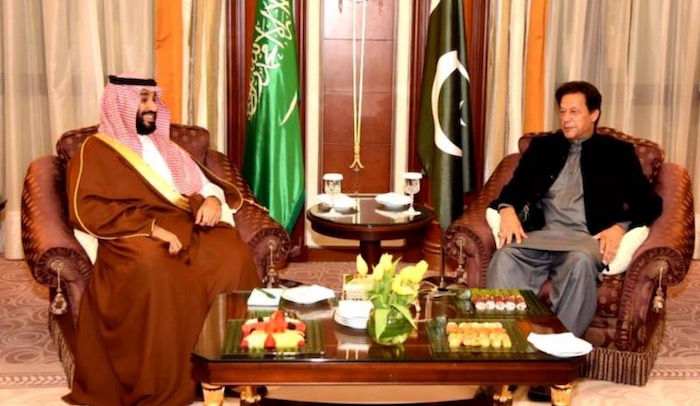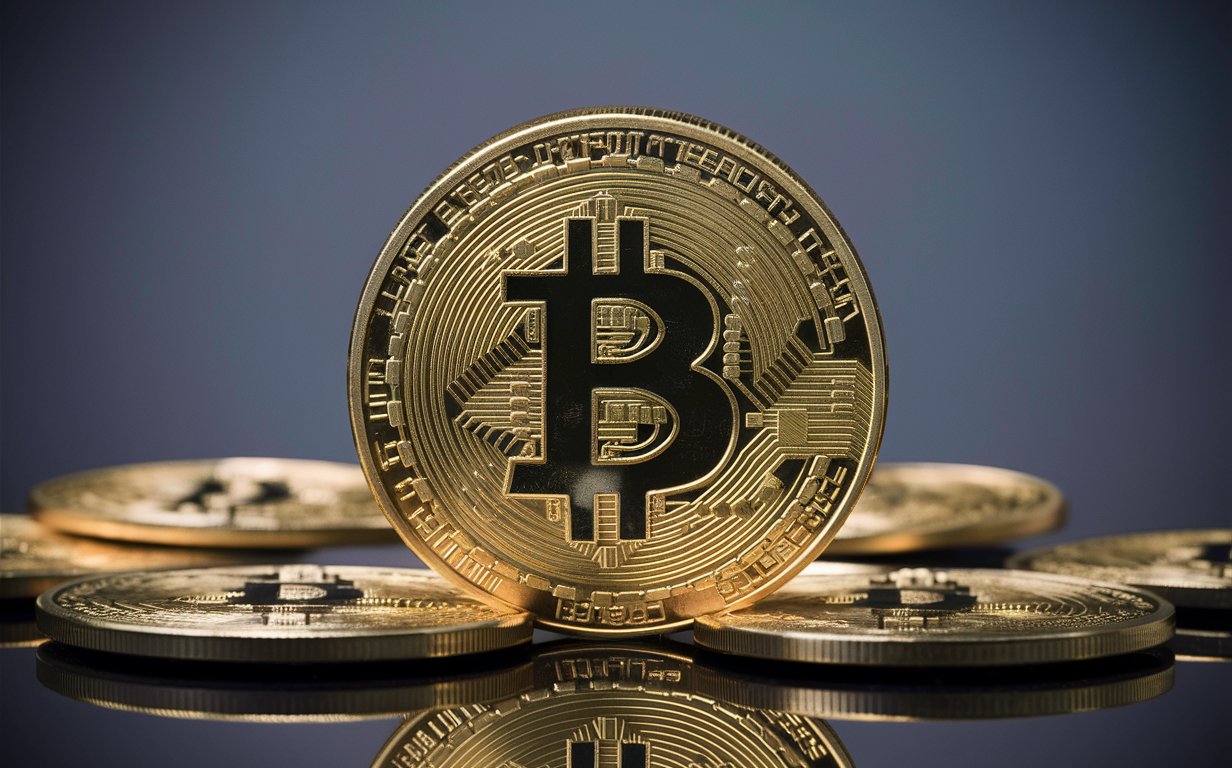Economy
Saudi Arabia and Pakistan are back on track

Pakistani Prime Minister Imran Khan is visiting Saudi Arabia at the personal invitation of Crown Prince Mohammed bin Salman.
Pakistan’s Chief of Army Staff Gen. Qamar Javed Bajwa arrived in Riyadh ahead of this high-profile visit to lay the groundwork for what is being described by the media as a major boost in Saudi-Pakistan ties, especially in terms of economic, trade and environmental cooperation.
This augurs well for the two brotherly countries, as their historic friendship faced an unfortunate rupture last year.
Luckily the leadership on both sides was resilient enough to see through the challenge and bring Saudi-Pakistan ties back on track.
To be sure, this resilience is rooted in the people-to-people relationship, which eventually helps them overcome temporary glitches and sustain cooperation on issues of mutual concern and interest. This time is no different — and here is why.
Soon after his election as prime minister in August 2018, Khan was able to develop a personal relationship with the crown prince.
He traveled to Saudi Arabia twice in the next two months, the second time at the personal invitation of the crown prince to attend the Future Investment Initiative conference as part of Saudi Vision 2030.
Khan had inherited a serious balance of payments crisis. So Saudi Arabia took the lead in offering a financial relief package of $6.2 billion, including $3 billion in loans and a $3.2 billion deferred oil payment facility.
Taking a cue from Riyadh, the UAE followed suit by offering $6 billion in additional support to Pakistan.
When the Saudi crown prince visited Pakistan in February 2019, he was personally driven by Khan to the prime minister’s house in Islamabad, up on the hill in Islamabad.
In another example that symbolized the personal chemistry between the two charismatic leaders, the crown prince cheerfully told the Pakistani premier: “I am your ambassador in Saudi Arabia.” (Later in the year, the crown prince would offer his personal plane to Khan to fly to New York for the UN summit. And even while Saudi-Pakistan ties briefly experienced a bad spell in 2020, Khan declared: “Pakistan and Saudi Arabia will always remain close friends.”)
That historic visit to Pakistan by Crown Prince Mohammed bin Salman in 2019 witnessed a major transition in Saudi-Pakistan strategic relations in the economic sphere, with the announcement of $20 billion of Saudi investments in Pakistan, including a $10 billion Aramco oil refinery and petrochemical complex in the strategic port city of Gwadar.
The rest of the investments were in the mining and renewable energy sectors.
This was in parallel with the efforts to sign the Free Trade Agreement to increase the volume of bilateral trade, which was worth $2 billion.
In the past, the two nations cooperated closely in security and geopolitical matters, and Saudi economic help was confined to oil concessions. Now, for the first time, the Kingdom was interested in the long-term economic development of Pakistan.
“This promising moment in Saudi-Pakistan ties is occurring amid a favorable turnaround in regional geopolitics, marked by breakthroughs on different fronts.“
–Dr. Ali Awadh Asseri
In particular, the choice of Gwadar for such an investment stake indicated the Saudi inclination to join the wider regional integration network: The China-Pakistan Economic Corridor.
In the natural order of things, the next logical step would have been to jointly work out the development plans for the proposed Saudi economic projects in Pakistan.
Unfortunately, international forces inimical to Saudi Arabia’s exceptional position in the Muslim world, and the historic Saudi-Pakistan alliance, could not digest the fact that the two brotherly nations were taking their relationship to a different level, where their interests could be geo-economically intertwined in future.
What happened next is a sad part of our current history, which is not worth recalling.
What is worth stating, however, is that Saudi Arabia is, and will remain, the heart of Islam for the Muslims of the world, and no other country can claim such a right: That the Organization of Islamic Cooperation (OIC) is the sole representative body of 57 Muslim countries and no attempt to create an alternative Muslim bloc will ever succeed; and, of course, the fact that Saudi-Pakistan ties are well-rooted in the love and affection that their people have for each other, and hence no conspiracy can hamper their organic evolution as historic partners.
That is why the false narrative regarding the OIC’s role in Kashmir did not take hold for long. That is why the dismal portrayal of Saudi economic support for Pakistan finally failed the test of times.
Fortunately, both nations have formal and informal channels of communication to overcome any instance of grave misunderstanding or deliberate misinformation impacting their relationship.
Their bond is unbreakable as it is founded on the will of the two peoples.
Hence, the two brotherly nations have always stood shoulder to shoulder with each other in difficult times. From defending the sanctity of the two holy mosques to defeating the scourge of terrorism, Pakistan has always been a key Saudi partner.
Likewise, Saudi Arabia has never disappointed Pakistan when it is faced with hard times, be it the wave of terrorism post-9/11 or the devastating earthquake of 2005.
The two countries also closely cooperate to achieve peace and stability in Afghanistan. The current or emerging Saudi engagement in Pakistan reflects the same spirit of camaraderie with Islamic roots.
In retrospect, what the visit of Prime Minister Khan to Jeddah shows is that the relationship between Saudi Arabia and Pakistan is back to the level it was at when the crown prince visited Islamabad more than two years ago.
The decision by Saudi Arabia and the UAE to roll over $2 billion loans to next year implies the resumption of their respective financial relief packages, which Pakistan desperately needs to ward off the devastating effects of the third wave of the coronavirus (COVID-19) pandemic.
The visit is expected to kick-start work on the $20 billion Saudi development projects in Pakistan, especially the Aramco oil refinery and petrochemical complex in Gwadar.
To boost bilateral trade, a comprehensive customs cooperation accord is also reportedly on the agenda.
Moreover, General Bajwa’s almost week-long interaction with his Saudi counterparts, and the recent appointment of retired Lt. Gen. Bilal Akbar as Pakistan’s ambassador to Saudi Arabia, will ensure enhanced coordination in defense and the strategic relationship between the two countries.
In fact, this time the relationship is expected to deliver deeper cooperation beyond defense and the economy, on issues of climate change in particular.
Khan shares the vision of the crown prince as set out in the recently announced Saudi Green and Green Middle East initiatives, which align with his government’s Clean and Green Pakistan initiative.
And, luckily, this promising moment in Saudi-Pakistan ties is occurring amid a favorable turnaround in regional geopolitics, marked by the Saudi olive branch to Iran, the end of the Qatar crisis, and the India-Pakistan cease-fire in Kashmir.
These developments surely open up the diplomatic space for Saudi Arabia and Pakistan to concentrate their joint efforts for economic development and regional stability.
• Dr Ali Awadh Asseri served as Saudi Arabia’s ambassador to Pakistan from 2001 to 2009 and received Pakistan’s highest civilian award, Hilal-e-Pakistan, for his services in promoting the Saudi-Pakistan relationship. He holds a Ph.D. in Economics from Beirut Arab University and authored the book ‘Combating Terrorism: Saudi Arabia’s Role in the War on Terror’ (Oxford, 2009).
Crypto
Bitcoin Rebounds from Slump Triggered by Iran’s Attack on Israel: Analyzing Market Sentiment and Investor Reactions

Table of Contents
Introduction
On April 13, 2024, Bitcoin experienced a significant price drop following the escalation of tensions between Iran and Israel. The attack on Israel by Iran led to a sharp decline in the price of Bitcoin, causing concern among investors and market analysts. However, the cryptocurrency market has shown resilience, with Bitcoin rebounding from the slump, indicating a potential recovery in the market. In this blog article, we will analyze the impact of the geopolitical event on Bitcoin’s price, market sentiment, and investor reactions.

Impact on Bitcoin Price
The attack on Israel by Iran led to a significant drop in the price of Bitcoin, with the cryptocurrency experiencing a sharp decline in its value. According to CoinMarketCap, the price of Bitcoin dropped from $25,987.73 to $24,427.20 within a few hours of the news. This decline can be attributed to the uncertainty and fear among investors, as geopolitical events can have a significant impact on the global economy and financial markets.
Market Sentiment
The sudden drop in Bitcoin’s price led to a wave of panic among investors, causing a shift in market sentiment. According to data from CoinMarketCap, the market sentiment for Bitcoin shifted from “Neutral” to “Negative” within hours of the news. This change in sentiment can be attributed to the fear of potential economic instability caused by the geopolitical event.
Geopolitical Events and Bitcoin
Geopolitical events have a significant impact on the cryptocurrency market, particularly on the price of Bitcoin. In recent years, we have seen how events such as the Russia-Ukraine conflict, the COVID-19 pandemic, and the ongoing US-China trade war have affected the cryptocurrency market. The attack on Israel by Iran is just another example of how geopolitical events can cause volatility in the market.
Investor Reactions
The sudden drop in Bitcoin’s price led to a wave of panic among investors, causing some to sell their holdings in a bid to minimize their losses. However, other investors saw this as an opportunity to buy Bitcoin at a lower price, believing that the cryptocurrency would recover in the long run. This divergence in investor reactions highlights the inherent volatility of the cryptocurrency market and the importance of understanding market sentiment and geopolitical events.
Recovery and Future Outlook
Despite the initial decline, Bitcoin has shown resilience and has started to recover from the slump. As of the time of writing, the price of Bitcoin has rebounded to $25,537.95, indicating a potential recovery in the market. However, the long-term outlook for Bitcoin remains uncertain, as the cryptocurrency market is heavily influenced by geopolitical events and market sentiment.
Conclusion
The attack on Israel by Iran led to a significant drop in the price of Bitcoin, causing panic among investors and uncertainty in the market. However, the cryptocurrency has shown resilience and has started to recover from the slump. As we move forward, it is essential to monitor geopolitical events and market sentiment to understand the potential impact on the cryptocurrency market.
China
Navigating the Economic Transformation: China’s Future Depends on Microeconomic Policies

Introduction
China’s economic growth has been a significant global phenomenon, with its rapid expansion driving global trade and shaping the global economy. However, as China enters a new phase of its economic development, it faces challenges that require a shift in focus from macroeconomic stimulus to microeconomic policies. This article explores the importance of microeconomic policies in China’s future economic growth and the implications for businesses and markets.

I. The Limitations of Macroeconomic Stimulus
- Temporary Boost: Macroeconomic stimulus, such as government spending and monetary policy, can provide a temporary boost to the economy. However, it does not address the underlying structural issues that hinder long-term growth.
- Amplifying Economic Shortcomings: Macroeconomic stimulus can exacerbate economic imbalances and inefficiencies, leading to a more significant correction in the future.
II. The Importance of Microeconomic Policies
- Structural Reforms: Microeconomic policies focus on structural reforms that address the root causes of economic challenges. These reforms can include labor market reforms, regulatory changes, and infrastructure investments.
- Encouraging Business Transformation: Microeconomic policies can create an environment that encourages businesses to transform and adapt to changing market conditions. This can lead to increased productivity, innovation, and competitiveness.
III. The Role of Businesses in China’s Economic Transformation
- Adapting to Market Changes: As China’s economy evolves, businesses must adapt to new market conditions and consumer preferences. This may involve shifting from traditional industries to more innovative and technology-driven sectors.
- Embracing Innovation: To prosper in the new economic environment, businesses must embrace innovation and technological advancements. This can include investing in research and development, adopting new technologies, and fostering a culture of innovation.
IV. Implications for Markets and Investors
- Changing Market Dynamics: As China’s economic focus shifts from macroeconomic stimulus to microeconomic policies, market dynamics will change. Investors should be prepared for a more volatile and uncertain market environment.
- Opportunities for Investors: The shift to microeconomic policies presents opportunities for investors in sectors that benefit from structural reforms and business transformation. These may include technology, healthcare, and environmental sectors.
Conclusion
China’s future economic growth depends on its ability to navigate the complex transition from macroeconomic stimulus to microeconomic policies. This requires a focused effort on structural reforms, business transformation, and a shift towards innovation and technology. As China embarks on this transformation, businesses and investors must adapt to the changing market conditions and seize the opportunities presented by the new economic environment.
Economy
Understanding the Latest Inflation Figures: Causes, Consequences, and the Fed’s Response

Introduction
Inflation, the rate at which the general level of prices for goods and services is rising, has been a topic of concern for economists and policymakers alike. Recently, the US inflation rate has risen to 2.5%, according to the Federal Reserve’s preferred measure, the Personal Consumption Expenditures (PCE) index. This figure is in line with economists’ expectations but remains above the central bank’s target of 2%. In this blog article, we will delve into the causes of this inflation rise, its impact on the economy, the Federal Reserve’s response, and the potential future implications.
Causes of Inflation:
- Supply Chain Disruptions: The COVID-19 pandemic has caused significant disruptions in global supply chains, leading to increased demand for goods and services.
- Fiscal Policy: Government spending and tax policies can influence inflation by increasing the demand for goods and services, leading to higher prices.
- Monetary Policy: The Federal Reserve’s actions, such as adjusting interest rates, can impact inflation by influencing the supply of money and credit in the economy.
Impact of Inflation on the Economy:
- Consumer Prices: Inflation directly affects the prices consumers pay for goods and services, potentially reducing their purchasing power.
- Interest Rates: Central banks, like the Federal Reserve, may adjust interest rates to control inflation, which can impact borrowing costs and economic growth.
- Economic Stability: High and persistent inflation can lead to economic instability, as businesses and consumers struggle to predict future prices.
Fed’s Response to Inflation:
- Interest Rate Adjustments: The Federal Reserve has the ability to adjust interest rates to control inflation, which can impact borrowing costs and economic growth.
- Communication: The Fed communicates its monetary policy decisions and future expectations to the public, which can influence market expectations and economic behavior.
- Inflation Targets: The Fed has set a target inflation rate of 2%, which it aims to maintain over the long term.
Future Implications of Inflation:
- Monetary Policy: The Fed’s response to inflation will depend on its assessment of the current economic situation and future expectations.
- Economic Growth: High and persistent inflation can negatively impact economic growth, as businesses and consumers may reduce spending and investment due to uncertainty.
- Policy Coordination: Central banks, governments, and international organizations may need to coordinate their policies to address inflation and promote economic stability.
Conclusion
The recent rise in US inflation to 2.5% is a cause for concern, as it remains above the Federal Reserve’s target. Understanding the causes of this inflation, its impact on the economy, and the Fed’s response is crucial for policymakers and investors alike. By addressing these issues, we can work towards maintaining economic stability and promoting sustainable growth.
-

 Featured3 years ago
Featured3 years agoThe Right-Wing Politics in United States & The Capitol Hill Mayhem
-

 Elections 20242 months ago
Elections 20242 months agoAnalyzing Trump’s Super Tuesday Triumph and Nikki Haley’s Strategic Moves
-

 News2 years ago
News2 years agoPrioritizing health & education most effective way to improve socio-economic status: President
-

 China3 years ago
China3 years agoCoronavirus Pandemic and Global Response
-

 Canada3 years ago
Canada3 years agoSocio-Economic Implications of Canadian Border Closure With U.S
-

 Conflict3 years ago
Conflict3 years agoKashmir Lockdown, UNGA & Thereafter
-

 Democracy3 years ago
Democracy3 years agoMissing You! SPSC
-

 Democracy3 years ago
Democracy3 years agoPresident Dr Arif Alvi Confers Civil Awards on Independence Day
























